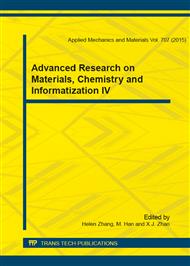p.144
p.149
p.154
p.158
p.163
p.168
p.172
p.176
p.180
Biodegradability of AZ31B Magnesium Alloy with a Permanganate Conversion Coating
Abstract:
Magnesium alloy has been considered as a revolutionary biodegradable material, but the fast degradation limits its development. A permanganate conversion coating for AZ31B magnesium alloy prepared, in order to improve its anti-corrosion property. The morphology and composition of the coating were characterized with scanning electron microscopy (SEM), X-ray diffraction (XRD) and energy dispersion spectroscopy (EDS), which showed that the coating was 40-170μm in thickness, with net-like micro-cracks, and was tightly combined with AZ31B magnesium alloy matrix. The main compositions of the coating were Mg and a series of oxides of Mn. Observed by the tests of electrochemical and immersion,the corrosion resistance of AZ31B magnesium alloy can be improved significantly through the permanganate conversion treatment
Info:
Periodical:
Pages:
163-167
Citation:
Online since:
December 2014
Authors:
Price:
Сopyright:
© 2015 Trans Tech Publications Ltd. All Rights Reserved
Share:
Citation:


